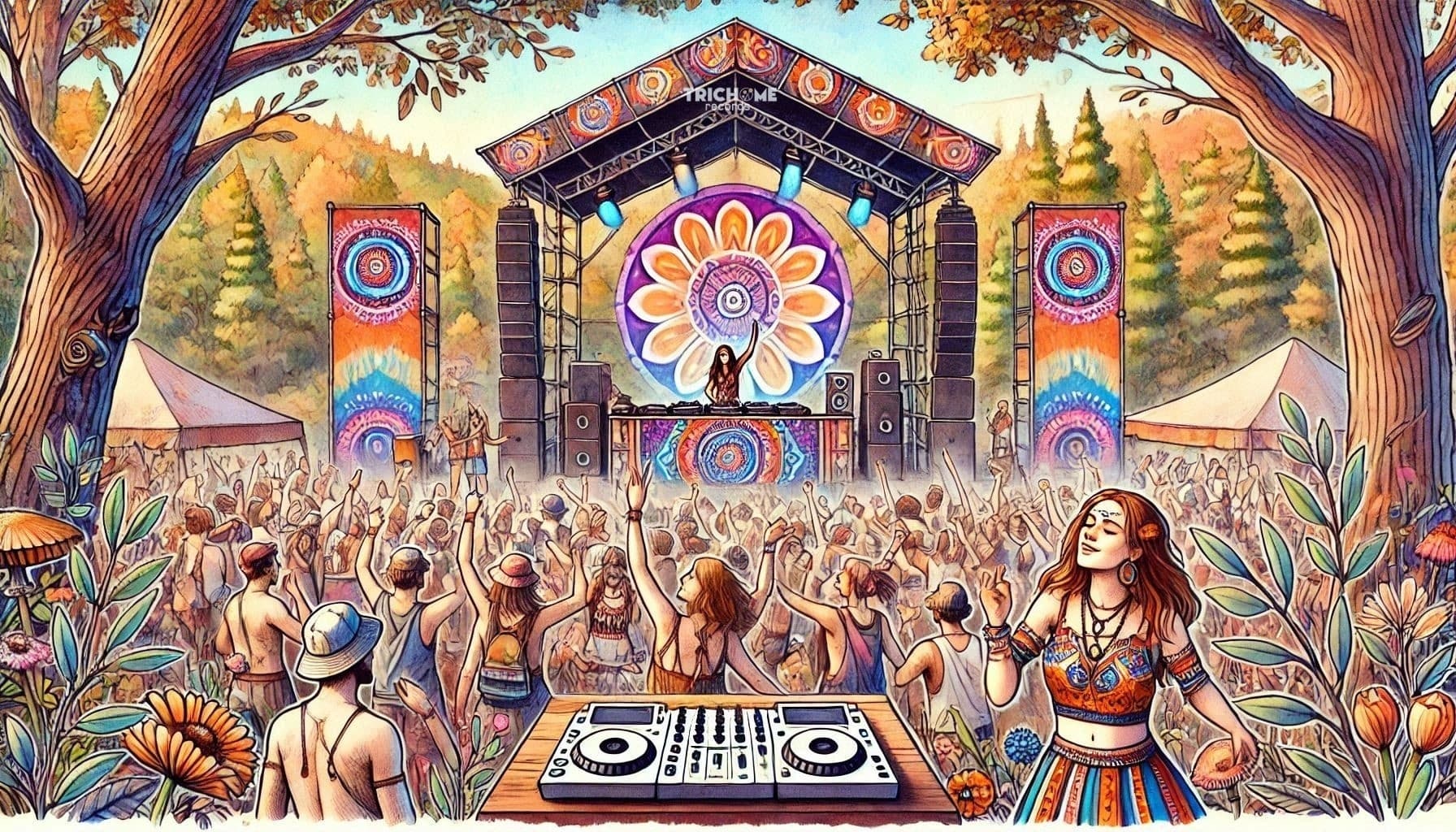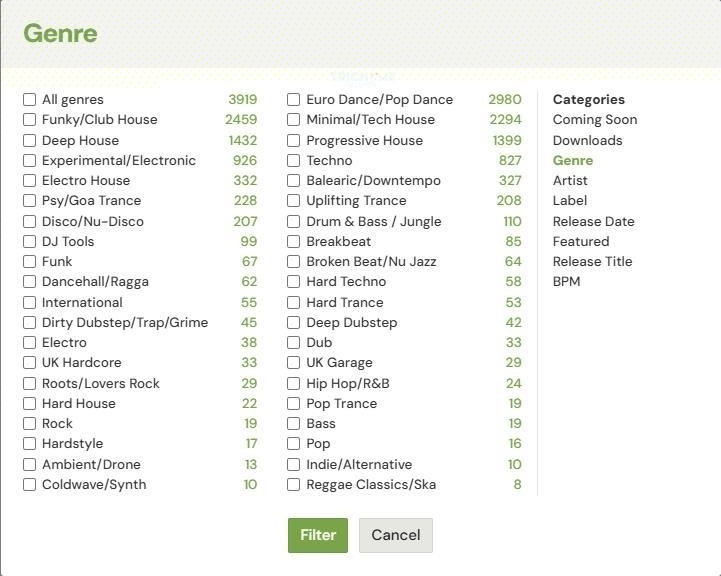Tribal Psy
Tribal psychedelic trance music is a vibrant and immersive genre that combines elements of electronic music with influences from traditional tribal sounds. Originating in the late 1990s, this style often features hypnotic beats, rhythmic basslines, and enchanting melodies that can transport listeners to otherworldly realms. It creates an atmosphere that encourages dancing, connection, and communal experiences, often enjoyed at festivals and outdoor gatherings.
Think of many drums, percussions, jungle, africa and so on, these are often used instruments in this genre, tribal has these sounds, maybe even all the way up to sounds and vocals sounding like the dune series.
Key aspects of Tribal Psy music
One of the key aspects of tribal psychedelic trance is its use of multicultural elements, incorporating sounds from various global traditions. You’ll often hear indigenous instruments, chants, and rhythms woven into the tracks, creating a rich tapestry of sound that resonates with listeners on both a personal and collective level. This blend fosters a sense of unity, as people from diverse backgrounds come together to celebrate life through music.
The genre is characterized by its driving tempos and intricate layers, enticing listeners to lose themselves in the rhythm and embrace a shared journey. The visual aesthetics accompanying tribal psychedelic trance, such as vibrant art and mesmerizing light shows, further enhance the experience, making it a feast for the senses.
In essence, tribal psychedelic trance music is not just about sound; it’s an invitation to explore deep cultural connections, enhance personal spirituality, and enjoy euphoric moments with others. Whether you’re dancing under the stars at a festival or simply listening at home, this genre offers a unique escape and connection to something greater.
Tribal Psy and it’s sub-genres
Find more psytrance styles here and start exploring more genres.
Tips and Tricks for Searching for Tribal Music Online
In the vast digital landscape of music, finding authentic tribal music can feel like searching for hidden treasures among countless genres and playlists. With its deep-rooted cultural significance and captivating rhythms, tribal music offers a unique auditory experience that connects listeners to ancient traditions and rituals. However, navigating the online world to uncover these distinct sounds can be daunting without the right guidance. Here are some tips and tricks for effectively searching for tribal music online.
When you want to listen or collect new tracks from this genre, it is interesting to see that on the bigger platforms there is actually no genre for tribal! Searching for tribal music online can be an enriching experience, but knowing where to start can make all the difference. One of the best tips is to explore dedicated music platforms and streaming services that specialize in world music, such as Bandcamp or SoundCloud. These platforms often feature independent artists and unique collections that you won’t find on mainstream sites. Additionally, using specific keywords like “tribal beats,” “indigenous music,” or “world rhythms” in your searches can help narrow down results and lead you to hidden gems.
Some examples;
The first example is beatport, the mega-menu on the top the screen has the ‘Genres’ section with many genres but there is not what we are looking for.
A tip for finding tracks on beatport is to scrape the charts; https://www.beatport.com/search/charts?q=tribal
On the website of Junodownload there is also no genre section available;
On Bandcamp we have some more options for locating tribal music tracks within the search on their site;
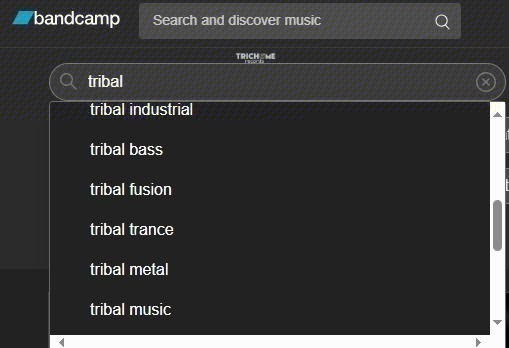
When you want to filter more to narrow down the results, use of tags can help finding the tracks you want;
Hopefully this will help you find the greatest tribal music or tribal psy tracks, good labels and artists!
Notable Tribal Psy Artists
Notable Tribal Psy Labels
Frequently Asked Questions
How did tribal psy music originate and evolve over time?
Tribal psy music’s origins are a fascinating blend of influences, evolving over time from a combination of traditional tribal rhythms and the burgeoning psytrance scene. It’s not a single, easily traceable lineage but rather a confluence of factors:
Early Influences (1990s-2000s):
The foundation of tribal psy music lies in the already established psytrance scene. Psytrance, with its driving rhythms, atmospheric soundscapes, and often-complex structures, provided the sonic framework. The emphasis on hypnotic rhythms and progressive sound design laid the groundwork. This genre drew on a wide range of world music traditions, particularly those emphasizing percussive instruments and rhythmic complexity. Artists and producers began incorporating elements from African drumming, South American rhythms, and other indigenous cultures into their psytrance productions. The broader electronic music scene, with its experimentation and exploration of new sounds and textures, played a role in the development of tribal psy music’s sonic palette.
Evolution and Development
As the genre evolved, there was a growing emphasis on incorporating authentic traditional tribal rhythms and instruments, rather than simply mimicking them. This led to collaborations between producers and musicians from different cultural backgrounds, leading to a more nuanced and respectful approach. The incorporation of traditional elements raised concerns about cultural appropriation. This led to a greater awareness and sensitivity among artists, resulting in more thoughtful and respectful approaches to incorporating traditional sounds and rhythms. Tribal psy music often aims to create a profound immersive experience for the listener. The music’s structure and soundscapes are designed to transport the listener into a state of altered consciousness, often associated with psychedelic experiences. The genre diversified, leading to various subgenres and variations, each with its unique characteristics and emphasis on specific cultural influences. Some subgenres might lean more heavily on traditional tribal elements while others might emphasize the psytrance aspects.
Global reach and community has given the genre’s popularity a big spread internationally, fostering a vibrant community of listeners and artists. This led to a greater exchange of ideas and influences, further shaping the evolution of tribal psy music.
In summary tribal psy music is a complex and evolving genre that draws on both established psytrance structures and a wide range of traditional tribal musical traditions. Its development reflects a complex interplay of musical innovation, cultural exchange, and a desire to create powerful sonic experiences that connect with the listener on a deeper level. The evolution continues as artists explore new ways to blend these elements, and the genre remains a dynamic and engaging force in the electronic music landscape.
What are the key characteristics of tribal psy music?
Tribal psy music, a captivating blend of traditional tribal rhythms and the intricate soundscapes of psytrance, possesses several key characteristics that contribute to its unique sonic tapestry and profound impact on listeners, particularly during psychedelic experiences. Its effectiveness in enhancing these experiences stems from the careful weaving of these elements:
Key Characteristics:
Intricate Rhythms: Often featuring complex, polyrhythmic patterns that draw from traditional tribal drumming and percussive instruments. These rhythms are not simply repetitive but evolve and intertwine, creating a sense of dynamic energy and unfolding. This complexity engages the listener on a deeper, more primal level.
Powerful Basslines which are deep, resonant basslines, often layered and modulated, are crucial to the genre. They provide a grounding, visceral experience, anchoring the listener in the music while simultaneously stimulating the imagination and creating a sense of profound movement. Melodic and Harmonic Structures; While not always prominent, melodic and harmonic elements are often present, frequently drawing from various cultural influences, creating a sense of both familiarity and intrigue. These melodic lines often intertwine with the rhythms, adding depth and complexity. Atmospheric soundscapes in psytranceare evident to the use of atmospheric sounds, including pads, sweeps, and evolving sound textures. These create a sense of space, mystery, and otherworldly immersion, allowing the listener to lose themselves in the music’s sonic landscape.
Use of Traditional Instruments: The incorporation of traditional tribal instruments, such as drums, flutes, and vocalizations, adds authenticity and cultural depth. These instruments often carry a symbolic weight, evoking ancient traditions and spiritual connections.
Dynamic Transitions: The music frequently transitions between different sonic landscapes, building intensity and creating a sense of anticipation. These transitions are often seamless, creating a sense of continuous flow and evolution.
Subtle and Evocative Vocals: While not always present, vocalizations, often echoing ancient chants or tribal languages, can be deeply evocative, adding an extra layer of spiritual or cultural significance.
Discovering and Immersing Oneself:
To effectively discover and immerse oneself in tribal psy music, particularly for enhancing psychedelic experiences, consider these approaches:
Explore diverse artists and fon’t limit yourself to a single artist or style. Explore various artists and subgenres within tribal psy to discover your personal preferences and the unique sonic landscapes they offer. Immerse yourself in the music and create a dedicated listening environment, free from distractions. Close your eyes, allow the music to envelop you, and let it guide your thoughts and emotions. Pay attention to the rhythms and notice how the rhythms unfold and intertwine. Feel the energy and movement of the music.
Connect with a community and explore online communities and forums dedicated to tribal psy music. Engage with other listeners and share your experiences. Combine with psychedelic experiences when you listen to tribal psy music during or before psychedelic journeys. The music can enhance the experience by creating a sense of immersion, focus, and connection to the inner self. Understand the cultural context from research and cultural influences embedded within the music. Understanding the origins and symbolism of the instruments and rhythms can deepen your appreciation and connection to the music.
By understanding and appreciating these characteristics, and by actively engaging with the music in a mindful and immersive way, one can unlock the profound potential of tribal psy music to enhance psychedelic experiences and explore the profound connections between music, consciousness, and spirituality.
How does Tribal music reflect the unique cultural values, beliefs, and social experiences of different communities?
Tribal music really shows the unique cultural values, beliefs, and experiences of different communities in some pretty cool ways.
Keeping Culture Alive: Storytelling through Music: In many cultures, music is a big part of sharing stories, family histories, and legends. These songs and chants help pass down the community’s history and memories.
Preserving Languages: Music is super important for keeping languages alive that are at risk of disappearing. Traditional songs in tribal music help keep the diversity of languages and cultures intact.
Rituals and Celebrations: Music is a huge part of traditional rituals and celebrations, marking important life events like births, rites of passage, weddings, and funerals. These musical gatherings really boost cultural values and social bonds.
Expressing Spiritual Beliefs: Connection to Nature: Lots of indigenous cultures have a deep connection with nature, which shows up in their music. Sounds from the natural world, like animals, wind, and water, are often mixed into their songs, highlighting the link between all living things.
Spiritual Experiences: Tribal music can help people reach different states of consciousness, enhancing spiritual experiences and connecting them to the divine. With rhythmic drumming and chanting, it creates a trance-like vibe that supports healing and strengthens community ties.
Understanding the Universe: Music helps communities share their views about the universe, their place in it, and their connections with deities and spirits. Songs often tell stories about creation and ancestral figures, emphasizing the powerful forces at play in the world.
Reflecting Social Structures: Roles and Relationships: Music often mirrors the social dynamics within a community, touching on things like gender roles, family ties, and social hierarchies. Different styles or instruments might be linked to specific groups or purposes.
Social Commentary: Tribal music can be a way to speak out against issues like social unfairness or political problems. The songs often carry messages about resistance, resilience, and the desire for change.
Building Community: Music plays an essential role in bringing people together. Activities like group singing and dancing create a sense of belonging and shared identity, which helps strengthen social bonds and encourages teamwork.
Showcasing Aesthetics: Instruments and Sounds: The types of instruments, melodies, and rhythms reflect the artistic tastes and cultural values of a community. These musical traits can be pretty unique and act as markers of cultural identity.
Dance: Usually, dance goes hand-in-hand with tribal music, representing cultural values and social experiences through movement. The dance styles can vary a lot between communities, showcasing their rich traditions.
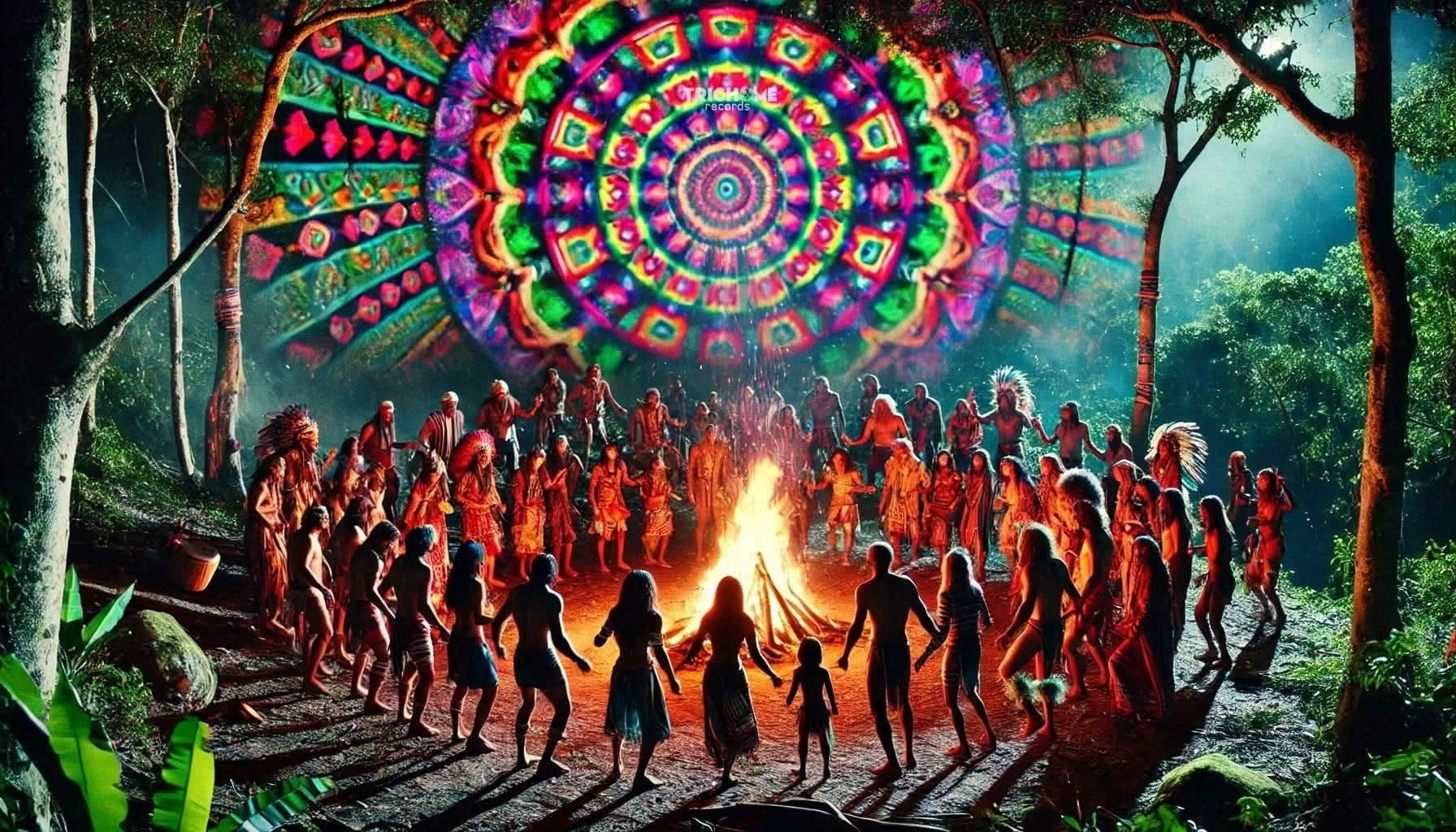 Expression of Aesthetic Values: The choice of instruments, melodies, rhythms, and harmonies showcases a community’s aesthetic preferences and cultural values, with unique musical elements serving as identifiers of cultural identity. Dance, which frequently accompanies tribal music, also reflects cultural values and social experiences through movement and gestures, and dance styles can vary widely among different communities, highlighting their distinct traditions. Overall, these elements demonstrate that tribal music is a rich and varied representation of the unique cultural values, beliefs, and social experiences across the globe. It serves as a crucial form of cultural expression, preservation, and transmission, significantly influencing both individual and collective identities. The diversity of tribal music can be seen in the distinct traditions that are shared among different communities. Each tribe has its own style of music, instruments, and dances that reflect their specific cultural heritage. For example, the Maasai people in Africa have a tradition of singing polyphonic melodies accompanied by rhythmic chanting and jumping dances, while the Native American tribes in the United States use drums and ceremonial chants in their music to connect with their ancestors and the natural world.These traditions are passed down through generations, preserving the unique cultural identities of each tribe. They serve as a way to pass on important stories, values, and customs to younger members of the community. Tribal music also plays a significant role in social gatherings and ceremonies, bringing people together in celebration and unity.In conclusion, tribal music is an essential aspect of cultural expression that highlights the diversity and richness of different communities around the world. It serves as a powerful tool for preserving and transmitting cultural heritage, shaping individual and collective identities, and fostering a sense of connection and unity among tribal members.
Expression of Aesthetic Values: The choice of instruments, melodies, rhythms, and harmonies showcases a community’s aesthetic preferences and cultural values, with unique musical elements serving as identifiers of cultural identity. Dance, which frequently accompanies tribal music, also reflects cultural values and social experiences through movement and gestures, and dance styles can vary widely among different communities, highlighting their distinct traditions. Overall, these elements demonstrate that tribal music is a rich and varied representation of the unique cultural values, beliefs, and social experiences across the globe. It serves as a crucial form of cultural expression, preservation, and transmission, significantly influencing both individual and collective identities. The diversity of tribal music can be seen in the distinct traditions that are shared among different communities. Each tribe has its own style of music, instruments, and dances that reflect their specific cultural heritage. For example, the Maasai people in Africa have a tradition of singing polyphonic melodies accompanied by rhythmic chanting and jumping dances, while the Native American tribes in the United States use drums and ceremonial chants in their music to connect with their ancestors and the natural world.These traditions are passed down through generations, preserving the unique cultural identities of each tribe. They serve as a way to pass on important stories, values, and customs to younger members of the community. Tribal music also plays a significant role in social gatherings and ceremonies, bringing people together in celebration and unity.In conclusion, tribal music is an essential aspect of cultural expression that highlights the diversity and richness of different communities around the world. It serves as a powerful tool for preserving and transmitting cultural heritage, shaping individual and collective identities, and fostering a sense of connection and unity among tribal members.
Are there shamanic spiritual aspects associated with tribal psy music?
Exploring the Shamanic Sounds of Tribal Psy Music: A Gateway to Spiritual Awakening
Tribal Psy Music, a genre that intertwines electronic sounds with traditional tribal rhythms, has its roots deeply embedded in ancient shamanic practices. These practices, which have been part of various cultures for millennia, often involve rituals aimed at connecting with the spiritual realm. Shamanism, characterized by its use of music, dance, and altered states of consciousness, serves as a conduit for healing and spiritual exploration.
The rhythmic beats and melodic patterns found in Tribal Psy Music echo the drumming and chanting used by shamans to enter trance states, facilitating a connection to the spirit world. The influence of indigenous cultures is palpable in the sounds of Tribal Psy Music. Many artists draw inspiration from the ceremonial music of tribes around the globe, incorporating traditional instruments such as didgeridoos, flutes, and hand drums into their compositions.
This fusion creates a soundscape that is both ancient and contemporary, inviting listeners to embark on a journey that transcends time and space. By blending these traditional elements with modern electronic production techniques, Tribal Psy Music not only honors its shamanic roots but also revitalizes them for a new generation seeking spiritual awakening.
Key Takeaways
- Tribal psy music is a gateway to spiritual awakening, offering a unique and powerful experience for listeners.
- The roots of tribal psy music can be traced back to shamanic traditions, with a focus on connecting with the spirit world and achieving altered states of consciousness.
- Shamanic sounds in tribal psy music have the power to facilitate spiritual healing and provide a transformative experience for the listener.
- Modern interpretations of shamanic sounds in tribal psy music continue to evolve, incorporating new influences and technologies while staying true to the tradition.
- Tribal psy music offers a unique opportunity to explore altered states of consciousness and shamanic practices, providing a deeply immersive and transformative experience for the listener.
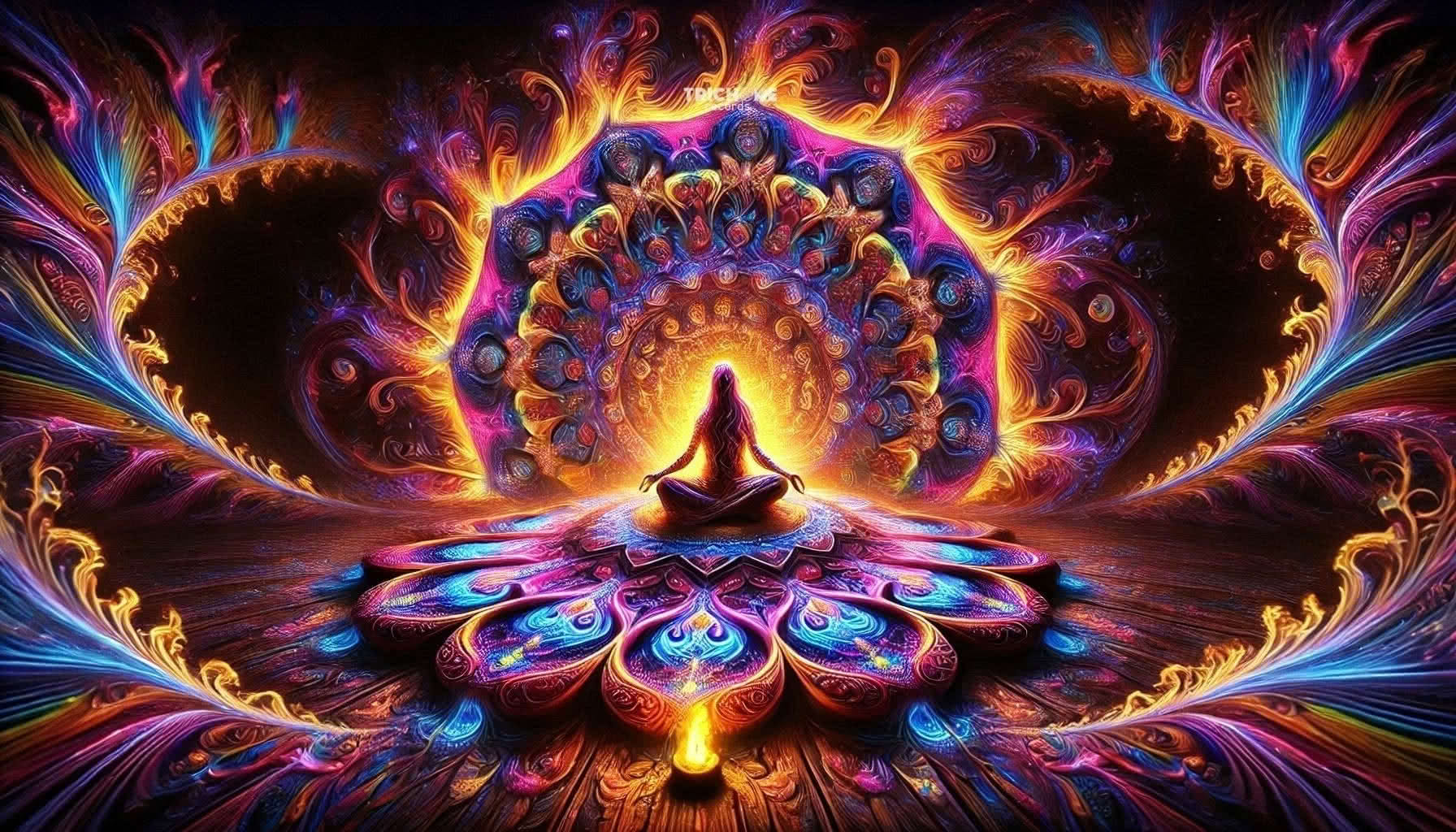 Shamanic Sounds and Spiritual Healing: The Power of Tribal Psy Music
Shamanic Sounds and Spiritual Healing: The Power of Tribal Psy Music
Introduction to Sound Therapy
The therapeutic potential of sound has been recognized across cultures, and Tribal Psy Music exemplifies this principle through its immersive auditory experience. The repetitive shamanic rhythms and layered textures can induce altered states of consciousness, allowing individuals to explore their inner landscapes. This phenomenon is akin to the shamanic journey, where participants often experience profound insights and emotional release.
The Healing Power of Music
The music acts as a catalyst for healing, enabling listeners to confront personal challenges and traumas in a safe and supportive environment. Moreover, the communal aspect of Tribal Psy Music events fosters a sense of belonging and shared experience. Participants often gather in circles, dancing and moving together in harmony with the music.
Collective Energy and Synergy
This collective energy amplifies the healing effects, as individuals feel supported by the group while they navigate their spiritual journeys. The synergy created in these gatherings can lead to transformative experiences, reinforcing the idea that music is not just an art form but a powerful tool for personal and communal healing.
Transformative Experiences Through Music
The combination of sound, community, and shared experience in Tribal Psy Music events creates a unique and potent environment for personal growth and healing. As participants come together to explore the depths of their consciousness, they can tap into the therapeutic potential of sound and emerge transformed, with a renewed sense of purpose and connection to themselves and others.
Connecting with the Spirit World: Shamanic Influences in Tribal Psy Music
At its core, Tribal Psy Music serves as a bridge between the physical and spiritual realms. The incorporation of shamanic influences allows listeners to engage with the unseen forces that shape their lives. Many tracks feature vocal samples or chants that evoke traditional shamanic practices or maybe even sacred rituals, creating an atmosphere conducive to spiritual exploration.
These elements invite listeners to open their minds and hearts, facilitating a deeper connection with their own spirituality and the universe at large. The use of soundscapes in Tribal Psy Music often mirrors the natural world, incorporating elements such as birdsong, water flowing, or wind rustling through trees. This connection to nature enhances the listener’s experience, grounding them while simultaneously elevating their consciousness.
By immersing themselves in these sonic environments, individuals can feel a sense of unity with all living beings, reinforcing the shamanic belief in interconnectedness. This profound connection can lead to moments of clarity and understanding that resonate long after the music has stopped.
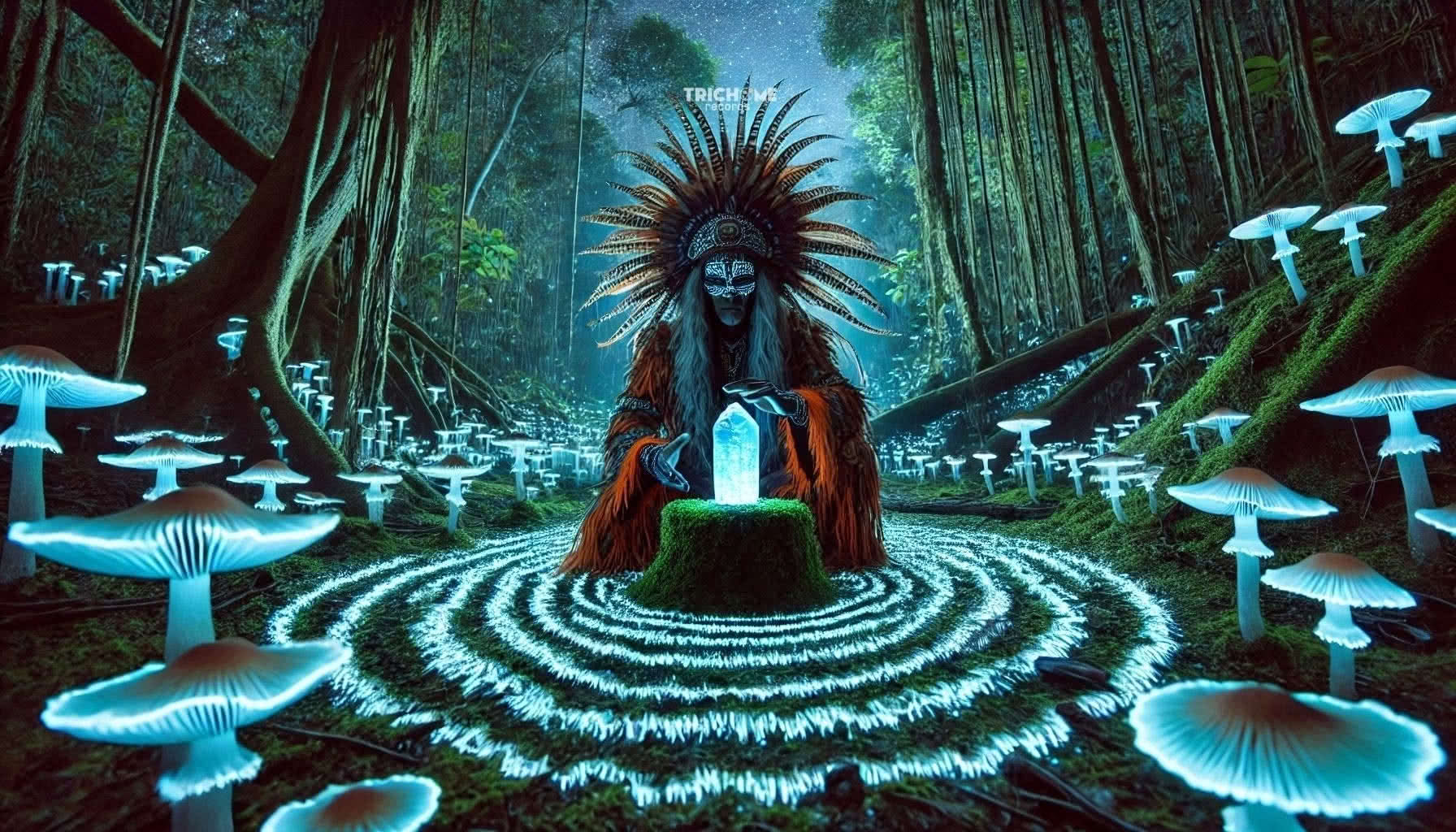 The Evolution of Shamanic Sounds: Modern Interpretations in Tribal Psy Music
The Evolution of Shamanic Sounds: Modern Interpretations in Tribal Psy Music
| Shamanic Sound Element | Modern Interpretation |
|---|---|
| Drumming | Electronic beats and rhythms inspired by traditional drumming patterns |
| Chanting | Use of vocal samples and repetitive vocal loops to create a trance-like atmosphere |
| Instrumentation | Incorporation of traditional shamanic instruments such as rattles, flutes, and didgeridoos alongside modern synthesizers and electronic effects |
| Nature Sounds | Integration of natural sounds like rain, wind, and animal calls to evoke a primal connection to the earth |
| Ritualistic Structure | Arrangement of music to mimic the flow of a shamanic ritual, with build-ups, peaks, and releases |
As Tribal Psy Music continues to evolve, contemporary artists are reinterpreting shamanic sounds through innovative approaches. The integration of digital technology allows for new sonic possibilities that were previously unattainable. Producers can manipulate sounds in ways that enhance their emotional impact, creating immersive experiences that captivate audiences.
This evolution reflects a broader trend within music where traditional forms are reimagined to resonate with modern sensibilities while retaining their spiritual essence. Additionally, the globalization of music has facilitated cross-cultural exchanges that enrich Tribal Psy Music. Artists from diverse backgrounds collaborate, blending various musical traditions with shamanic elements.
This fusion not only broadens the genre’s appeal but also deepens its spiritual significance. By embracing a multitude of influences, modern Tribal Psy Music becomes a tapestry of sounds that honors its roots while inviting listeners to explore new dimensions of consciousness.
Exploring Altered States of Consciousness: Shamanic Practices in Tribal Psy Music
The exploration of altered states of consciousness is a central theme in both shamanic practices and Tribal Psy Music. Through rhythmic drumming and hypnotic melodies, listeners can enter trance-like states that facilitate introspection and self-discovery. This process mirrors traditional shamanic journeys where practitioners seek guidance from spirit allies or ancestors. Ecstatic dance and psychedelic visuals are elements to get to these states.In this context, music becomes a vehicle for transformation, allowing individuals to transcend ordinary reality and access deeper layers of their psyche. Moreover, many Tribal Psy Music events incorporate elements such as guided meditations or visual projections that enhance the experience of altered states. These practices create an environment conducive to exploration and healing, encouraging participants to let go of their inhibitions and embrace vulnerability.
As individuals navigate these altered states together, they often report feelings of unity and interconnectedness, reinforcing the shamanic belief in the collective consciousness that binds all beings. In conclusion, the exploration of shamanic sounds within Tribal Psy Music offers a profound gateway to spiritual awakening. By honoring ancient traditions while embracing modern interpretations, this genre serves as a powerful tool for healing and self-discovery.
As listeners engage with these sounds, they embark on a journey that transcends time and space, connecting them with the rich tapestry of human experience and the mysteries of the spirit world. Let the global beats create tribal fusion and we hope this helps you in your journey to the answers you are looking for.
How does Tribal music facilitate the exploration of ancestral roots and the search for spiritual meaning?
Tribal music is a powerful way to connect with your roots and find deeper meaning in life. It really ties you back to traditional wisdom and practices. When you use old instruments and traditional singing styles, it makes you feel a strong connection to your heritage. The sounds can bring back memories and stir up emotional feelings. Many tribal songs tell stories about ancestors, myths, and important events, letting you dive into your culture when you listen or perform them.
Music is also key in rituals and ceremonies that get passed down through generations. Being part of these events can help you feel closer to the ways and beliefs of your forebears.
Additionally, rhythmic beats and chants can change your state of mind, sparking introspective thoughts and spiritual moments. They often help you feel connected to something bigger, like ancestral spirits or nature. In many tribal cultures, music can create trance-like states that help you find guidance or healing, which can be eye-opening on your spiritual journey.
Tribal music also has a way of pulling out deep feelings, allowing you to express emotions and heal from past wounds. It’s a great outlet for sorting through tough experiences and finding peace.
On top of that, tribal music conveys spiritual and philosophical beliefs. It often reveals how a community views the universe and their roles in it, connecting with gods and spirits. Through music, you can explore your own beliefs and gain a deeper understanding of your cultural roots. Many indigenous people have a strong link to nature, and you often hear this reflected in their music. It can create a sense of unity with the world around us and highlight important environmental issues.
Tribal music conveys key spiritual values like respecting elders and caring for the community and Earth. These ideas help you find a stronger sense of direction in your life.
Tribal music brings people together in special places during community events, creating a sense of belonging and shared goals. Participating in group singing, dancing, or drumming can really enhance that sense of togetherness. These moments can lead to profound personal change and spiritual growth. Plus, tribal music connects different generations, allowing wisdom and insight to flow from elders to younger folks. This bond with those who came before us can lay a solid path for personal and spiritual exploration.
Overall, tribal music is a major force in exploring your heritage and embarking on an enriching spiritual journey. It connects you to your history, shifts your perspective, shares important beliefs, and fosters a supportive community for discovery.
What are the social and psychological impacts of Tribal music on individuals and communities?
Tribal music has a big impact on people and communities, influencing how we interact and feel mentally in so many ways.
Let’s talk about the social side of things first. When people gather for activities like singing, drumming, and dancing, it builds a sense of togetherness. You really get to know others and grow those connections, which helps everyone feel part of something bigger. Tribal music also carries important messages. It shares morals, history, and cultural beliefs, kind of like storytelling through tunes. When folks join in these musical activities, they soak up these messages and support the way their community runs.
Music opens up chances for socializing and sharing feelings. It helps people talk about what they feel, swap stories, and bond. Plus, it bridges gaps between different groups, encouraging a cool cultural exchange. Keeping cultural heritage alive is another key role of tribal music. It helps communities hold onto their identity and fight against losing their culture over time. For those who are often overlooked, tribal music can be a powerful tool for change. It gives a voice to the voiceless, draws attention to important issues, and gets people working together.
Now, let’s think about the psychological effects. Music really hits our emotions, letting us express feelings like joy or sadness. It can be a great way to release what we’re feeling and even heal a bit. The calming vibes from tribal rhythms can help lower stress, too. It promotes mindfulness, making us feel better overall and boosting our sense of identity and pride in where we come from. Tribal music can also spark spirituality, helping folks connect to something bigger and deepening their understanding of their place in life.
And check this out, research shows music can help with cognitive skills like memory and attention. So, getting involved in tribal music can really sharpen our minds.
For example, Indigenous communities often use tribal music in healing ceremonies to boost health and well-being. It’s also a key part of rituals that honor ancestors and keep traditions strong. In many African cultures, music and dance are at the heart of social events, bringing people together during ceremonies and celebrations. It plays a huge role in building community bonds and expressing cultural identity.
Even in modern times, various neo-tribal groups have picked up tribal music to express their shared values and beliefs, creating a sense of connection among their members. In short, tribal music shapes our social lives and well-being in so many important ways. It’s vital for our mental health and for keeping cultural heritage alive and kicking.
How does Tribal music contribute to the preservation and revitalization of cultural heritage?
Tribal music plays a big part in keeping cultural traditions alive and thriving.
Sharing Knowledge and Traditions: Tribal songs often tell stories about family history and the beliefs of a community. Through music, people share historical events, myths, and their heritage. This helps keep memories alive for future generations. Plus, the lyrics play a key role in saving languages. It’s super important for indigenous groups whose languages might fade away. Music is also central to many rituals and ceremonies, marking important life events and reinforcing shared values. By participating in these musical moments, communities keep their customs alive for the younger folks.
Representing Cultural Beliefs: Tribal music often reflects spiritual beliefs and worldviews. It helps folks connect with their spiritual roots and understand their place in the universe. Music also represents social norms and traditions, often sharing messages about how to behave and individual responsibilities in the community. Many indigenous cultures show their close bond with nature through their music, using natural sounds and themes that raise awareness about the environment and inspire care for it.
Promoting Cultural Identity and Pride: Taking part in tribal music brings people together, creating a sense of belonging within the community. This shared experience strengthens ties across different generations. When people engage with their musical heritage, it boosts their cultural pride and self-respect, especially for those from marginalized backgrounds who might have experienced oppression. Tribal music also serves as a strong form of resistance against cultural assimilation. By keeping their unique musical traditions alive, communities maintain their identity and resist outside pressures to conform to dominant cultural norms. Music becomes a powerful tool for empowerment and a way for individuals to reclaim their sense of belonging and connection to their roots.Furthermore, engaging with traditional music can also foster a sense of unity and solidarity within a community, providing a shared experience that brings people together and strengthens social bonds. This can be especially important for marginalized groups, who may face discrimination or exclusion in society.In this way, the preservation and celebration of musical heritage not only serves as a source of cultural pride and self-respect for individuals, but also as a form of resistance against dominant cultural forces that seek to erase or marginalize diverse cultural expressions. By valuing and embracing their musical traditions, communities can assert their identities and assert their right to exist on their own terms..
Adaptation and Innovation: While sticking to traditional roots, tribal music often mixes in modern styles. This blend attracts younger audiences and keeps traditions fresh and meaningful as society changes. Today’s technology, like recording gear and digital platforms, is also used to capture and share tribal music, helping spread appreciation for these cultural treasures and promoting interaction between cultures.
Revitalization Efforts: Many communities are setting up programs and cultural centers focused on preserving tribal music. These initiatives give younger generations the chance to learn about traditional instruments, songs, and dances. Elders play a key role in teaching these skills to the youth, ensuring traditions live on. Grassroots projects led by community members are also vital in revitalizing tribal music, focusing on reviving languages and cultural education through performances that engage everyone.
In summary, tribal music is a powerful tool for keeping culture alive and making it relevant today. It ensures that knowledge, values, and traditions continue while adapting to modern times.

